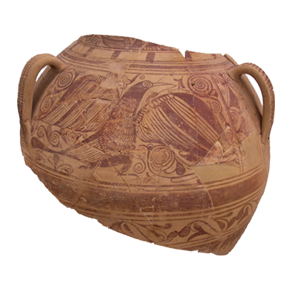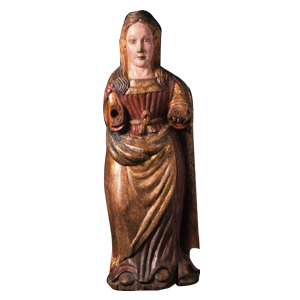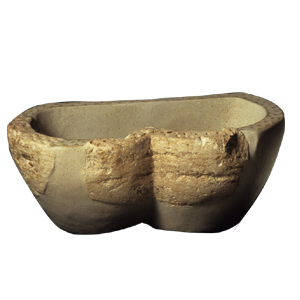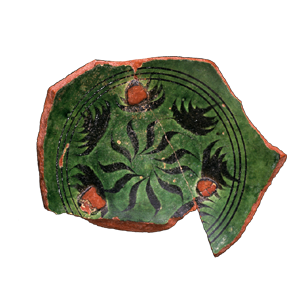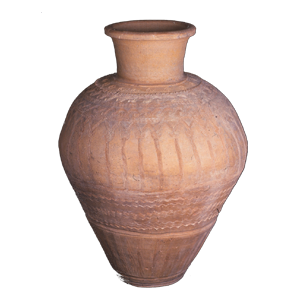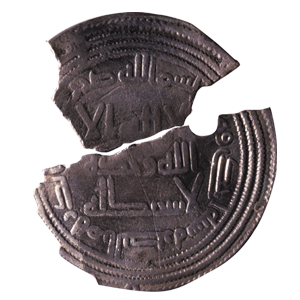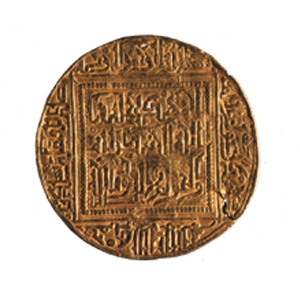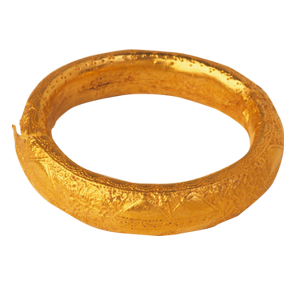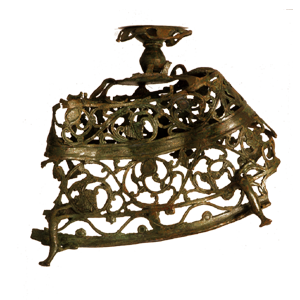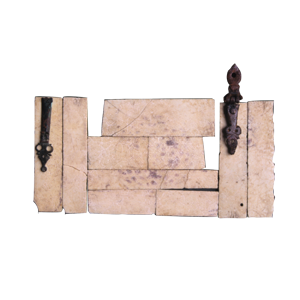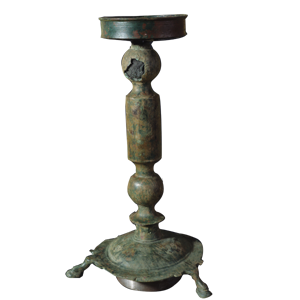
Table candleholder
C/ Historiador Palau, Denia Bronze h: 47'5 cm; d: 26 cm Fatimid Islamic 11th century
Table candlestick, reconstructed. It consists of three assembled parts. The base is a spherical cap with a winged rim from which three horse-hoof-shaped legs emerge; it is topped by a truncated cone-shaped pivot with a flat, curved rim. The shaft rests on this pivot, which is formed by a spherical node, a smooth, hexagonal-section column and a spherical node with a flared finish to support the top plate. The saucer is formed by a truncated cylindrical disc with a flat base, short walls and a thickened rim with a slightly curved lip. The candlestick is undecorated. It is made of bronze, sand-moulded, and the three parts are joined and assembled by tin soldering.
The candelabrum is one of nine that have appeared in the set of bronzes from Denia (AZUAR, 1989, 51SS) and is a very unique piece, as no similar examples have been found on the Iberian Peninsula to date. They were studied in part by J. Zozaya (1967) and probably arrived in Denia as part of the gifts that the Fatimid Caliph sent to the Taifa Iqbal al-Daula in gratitude for the food sent to quell the famine suffered by Egypt in 1055 (AZUAR, 1989).
C.S.: 7701
TERUEL, 1988.
Highlights of the Middle Ages Room
- TINAJA CON DECORACIÓN
ESTILO ELCHE-ARCHENA
Tossal de la Cala (Finestrat).
Cerámica
h: 39 cm; a: 46 cm; e: 30 cm
Iberian
Siglos II-I a.C. - ................................................. Fondo Histórico MARQ Carving on wood and polychrome on canvas covered with a layer of plaster h: 94.5 cm; w: 30 cm; d: 23 cm: 30 cm; w: 23 cm Late Gothic First half of the 16th century
- ................................................. Castell d'Ambra, (Pego) Travertine marble h: 35.8 cm; w: 20 cm; h: 18.5 cm Of Islamic origin and Christian reuse 1250-1280
- ................................................. Rambla Méndez Nuñez (Alicante) Ceramic h: 16.3 cm; w. 4.4 cm: 4,4 cm Italian import End of the 15th century - Beginning of the 16th century
- ................................................. Church of Santa María (Alicante) Ceramic h: 90 cm; w: 63 cm Late Gothic Mid-15th century
- ................................................. Finca "La Marquesa" (Almoradí) Caliphate Silver Mid-11th century AD.
- ................................................. Numismatic Fund MARQ Gold d: 2'8 cm; p: 4'65 gr; p.c.:12 h. Medieval Islamic Hafsid. Tunisia 1249-1277
- ................................................. Castillo del Río (Aspe) Gold leaf h: 1.8 cm; d: 7.6 cm Islamic Mudejar 13th century
- ................................................ C/ Historiador Palau, Denia Bronze h: 47'5 cm; d: 26 cm Fatimid Islamic 11th century
- ................................................. C/ Historiador Palau, Denia Bronze h: 21 cm; w: 26 cm; Fatimid Islamic 2nd ½ c. 10th c.
- ................................................. Torre Grossa Castle (Jijona) Reconstructed chest with bone plates and metal ornaments h: 26 cm; w: 11 cm; d: 10 cm (restored) Islamic Almohad Late 12th century, first half of the 13th century

